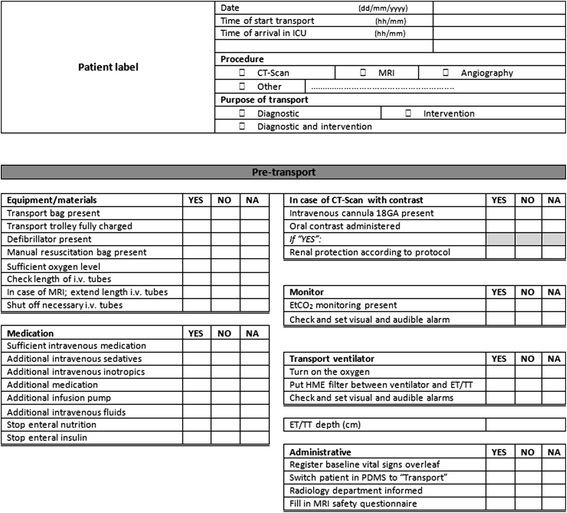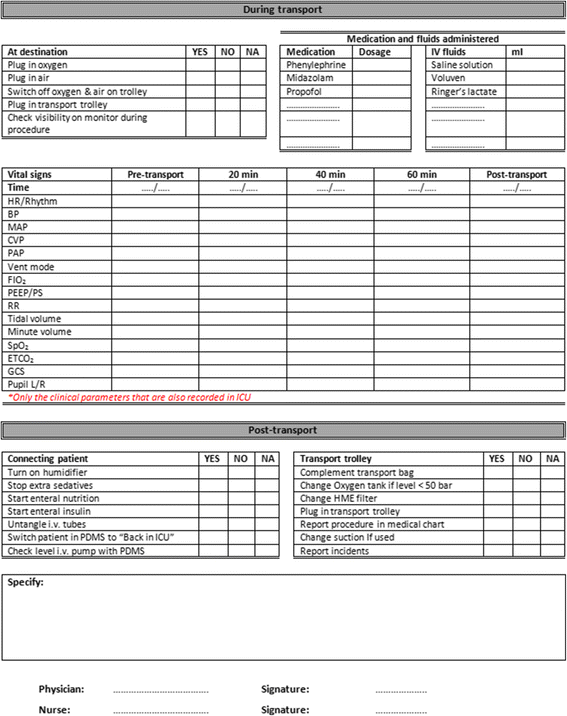A comprehensive method to develop a checklist to increase safety of intra-hospital transport of critically ill patients
- PMID: 25947327
- PMCID: PMC4438434
- DOI: 10.1186/s13054-015-0938-1
A comprehensive method to develop a checklist to increase safety of intra-hospital transport of critically ill patients
Abstract
Introduction: Transport of critically ill patients from the Intensive Care Unit (ICU) to other departments for diagnostic or therapeutic procedures is often a necessary part of the critical care process. Transport of critically ill patients is potentially dangerous with up to 70% adverse events occurring. The aim of this study was to develop a checklist to increase safety of intra-hospital transport (IHT) in critically ill patients.
Method: A three-step approach was used to develop an IHT checklist. First, various databases were searched for published IHT guidelines and checklists. Secondly, prospectively collected IHT incidents in the LUMC ICU were analyzed. Thirdly, interviews were held with physicians and nurses over their experiences of IHT incidents. Following this approach a checklist was developed and discussed with experts in the field. Finally, feasibility and usability of the checklist was tested.
Results: Eleven existing guidelines and five checklists were found. Only one checklist covered all three phases: pre-, during- and post-transport. Recommendations and checklist items mostly focused on the pre-transport phase. Documented incidents most frequently related to patient physiology and equipment malfunction and occurred most often during transport. Discussing the incidents with ICU physicians and ICU nurses resulted in important recommendations such as the introduction of a standard checklist and improved communication with the other departments. This approach resulted in a generally applicable checklist, adaptable for local circumstances. Feedback from nurses using the checklist were positive, the fill in time was 4.5 minutes per phase.
Conclusion: A comprehensive way to develop an intra-hospital checklist for safe transport of ICU patients to another department is described. This resulted in a checklist which is a framework to guide physicians and nurses through intra-hospital transports and provides a continuity of care to enhance patient safety. Other hospitals can customize this checklist to their own situation using the methods proposed in this paper.
Figures


References
Publication types
MeSH terms
LinkOut - more resources
Full Text Sources
Other Literature Sources
Medical

